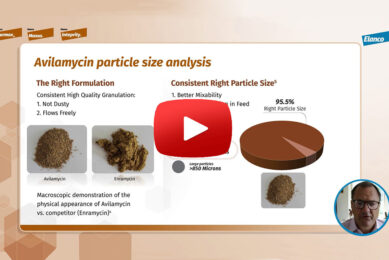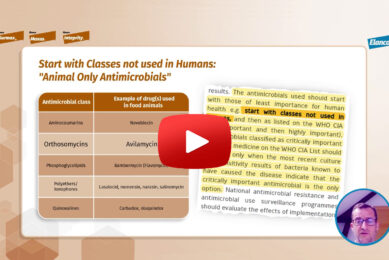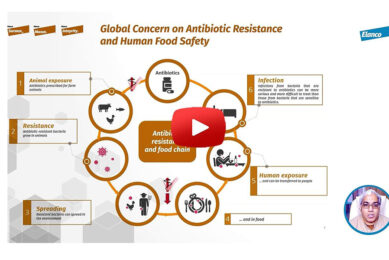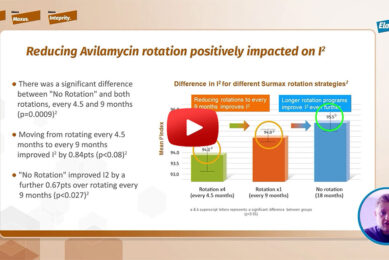Understanding the novel double mechanism action of Avilamycin
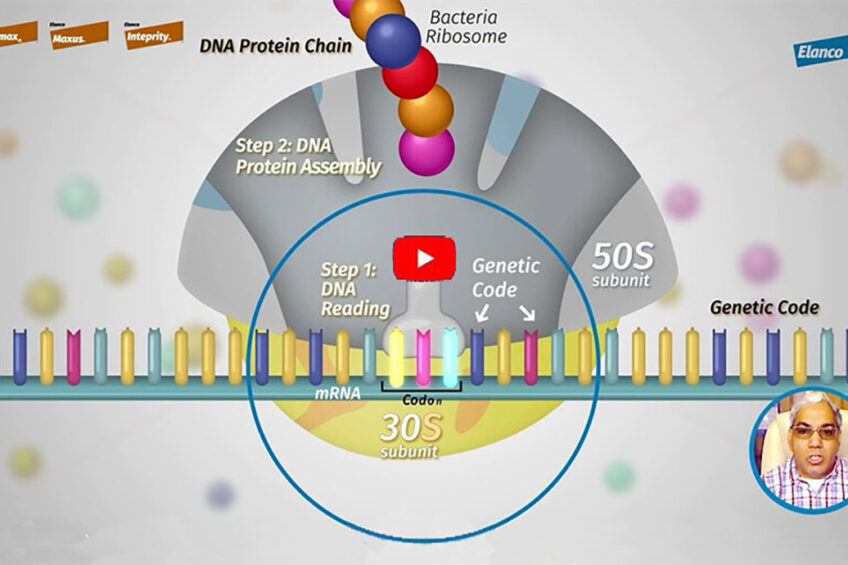
In this third video, learn how Avilamycin inhibits the bacterial protein synthesis process through a novel double mechanism of action.
Avilamycin belongs to the orthosomycin class of antimicrobials. Avilamycin is primarily active against gram positive bacteria. Bacteria, like all living cells, constantly make proteins to maintain cellular function including cell replication. This also includes DNA replication which is needed before cell replication can happen. Protein synthesis is a process that occurs via the ribosome found in bacteria.
Avilamycin inhibits protein synthesis by a novel double mechanism of action. Firstly, by blocking the initiation steps of protein synthesis. And secondly, by blocking the late stages of protein synthesis. Thereby, inhibiting protein synthesis which leads to bacterial death.
Ribosomes
Ribosomes are made up of two subunits: 30s and 50s. And this is the machinery in cells that are responsible for assembling individual protein blocks called amino acid into an active protein. The 30s and 50s work as a tag team to read the genetic code and assemble the amino acids respectively into a functional protein. Essentially, in the first step of protein synthesis mRNA delivers a unique genetic code to the 30S ribosomal subunit. While in the second step of protein synthesis, tRNA delivers individual amino acid blocks to the 50s ribosomal subunit.
Avilamycin binds to both the 30s and 50s subunits and blocks protein synthesis in the following order:
- By attaching to the 30s, Avilamycin prevents reading of the genetic code by mRNA
- By attaching to the 50s, Avilamycin prevents amino acid assembly by the tRNA
The binding sites of Avilamycin on the ribosome is different from those used by other antibiotics that are also protein synthesis inhibitors. For example, antibiotics such as Virginiamycin, which is also a protein synthesis inhibitor, have only a single mode of action in that they only bind to a different binding site on the 50s ribosomal subunit. This explains a lack of cross resistance between Avilamycin and other antibiotics that inhibit protein synthesis.
Take a look at video 1 and video 2 from the NEW series:



